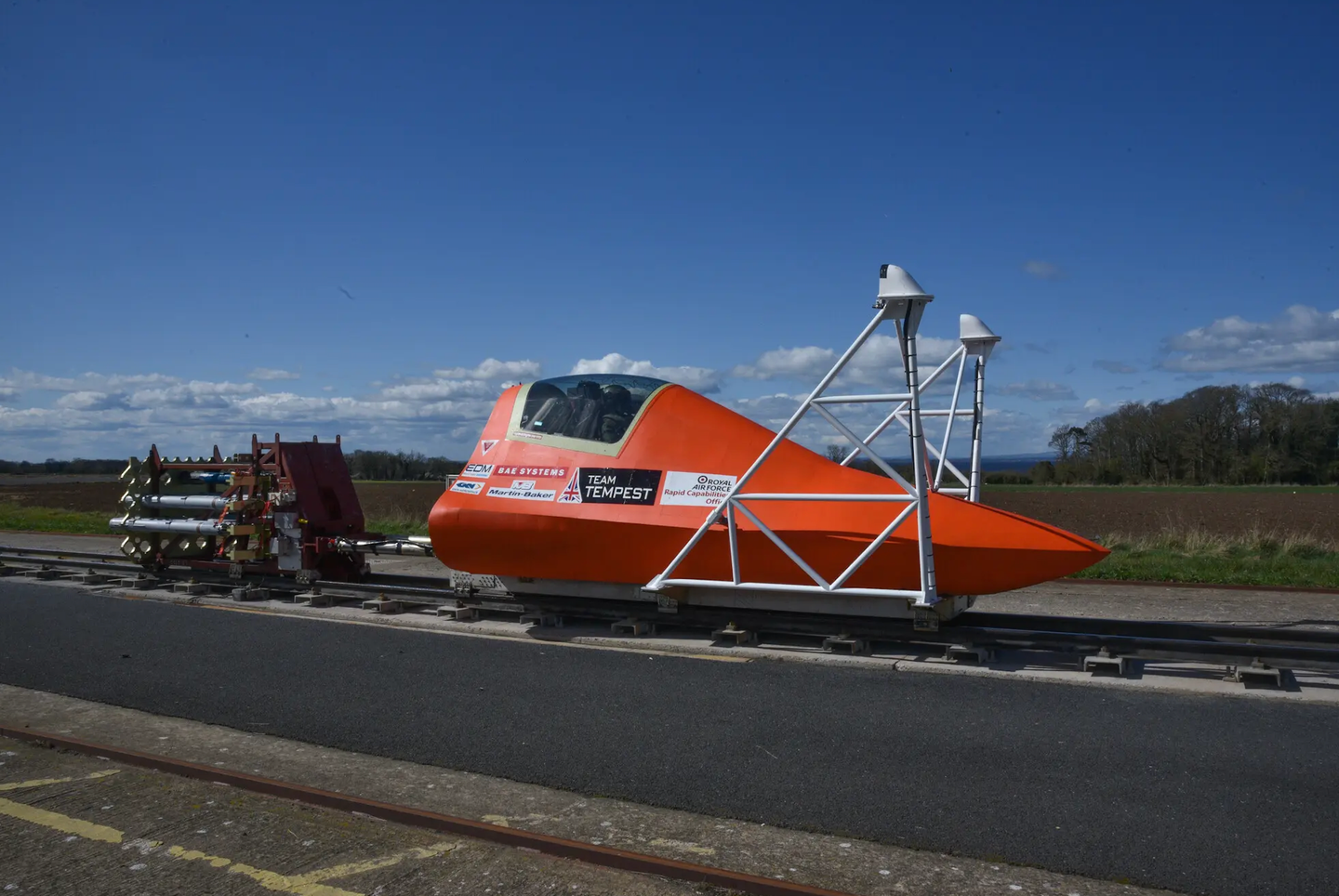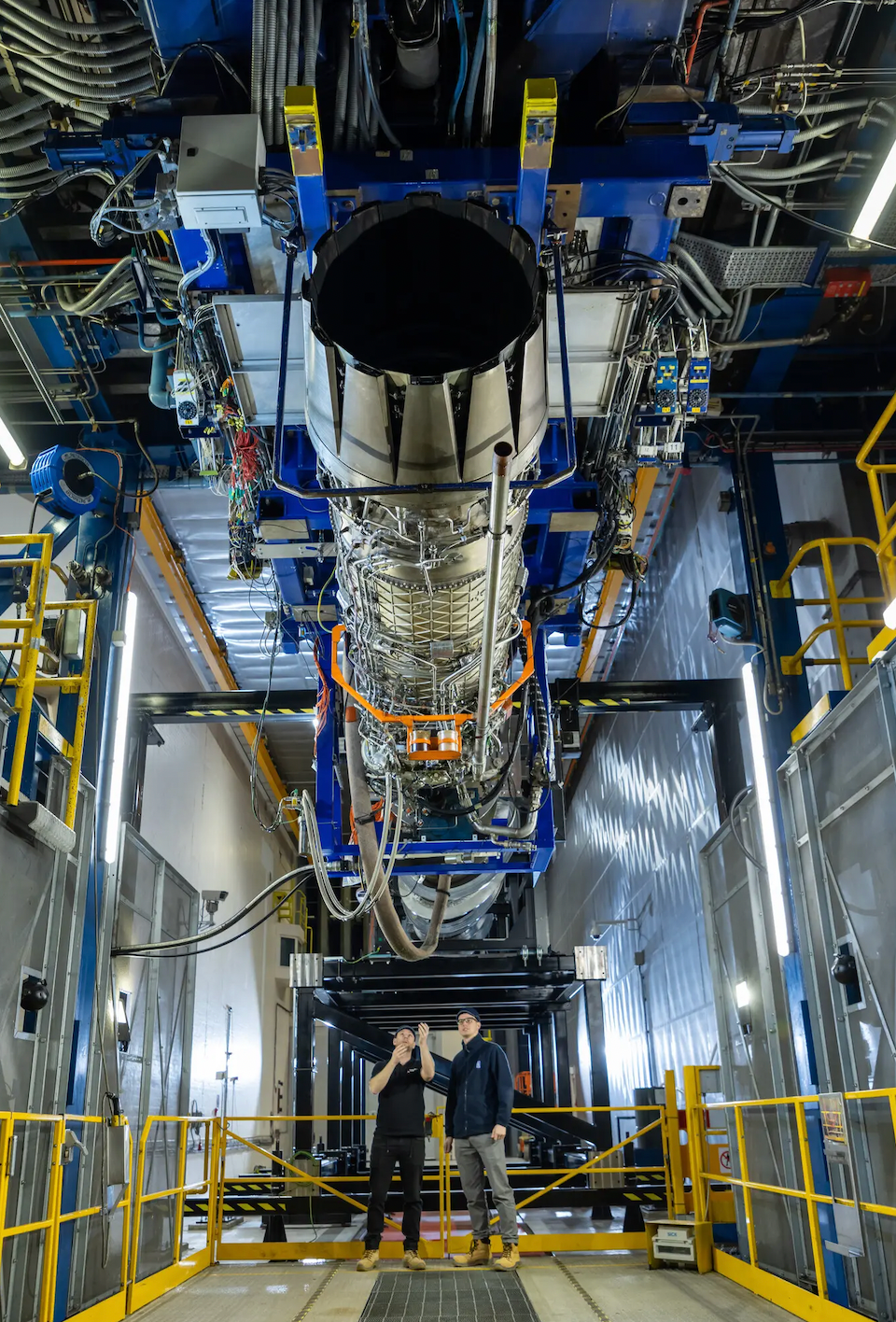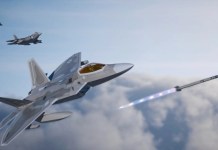The highly anticipated British-led Tempest future stealth fighter is gaining momentum in its development, with the ongoing trials of a Martin-Baker ejection seat utilizing a rocket sled testing mechanism defining the project’s forward trajectory.
BAE Systems, the program lead for the Tempest future stealth fighter, unveiled video and photos of ejection seat trials conducted on June 14.
The company announced that engineers developing the UK’s next-generation supersonic stealth combat aircraft have recently performed high-speed ejection seat trials as part of the ongoing progress.
The recently conducted high-speed ejection seat trials play a crucial role in guaranteeing the safety and dependability of the crew escape systems for the Tempest aircraft.
Led by a team of BAE Systems engineers in collaboration with Martin-Baker, a renowned UK firm with expertise in crew ejection technology, the tests utilized a rocket-propelled sled that reached speeds exceeding 500mph.
Have you seen the latest developments on our flying demonstrator programme?
Alongside @TeamTempestUK partners, we've been testing revolutionary technologies needed for the UK's future combat aircraft, Tempest. Watch the video to find out more ?https://t.co/bGStAU209D pic.twitter.com/Oku2W9xxxM
— BAE Systems Air (@BAESystemsAir) June 14, 2023
This collaborative initiative involves experts from BAE Systems, Rolls-Royce, Leonardo UK, MBDA, the Ministry of Defense (MoD), and several British small and medium-sized enterprises.
Together, they are working towards developing the Tempest aircraft, pooling their expertise and resources for the project’s success. The high-speed ejection seat trials represent just one aspect of a comprehensive development endeavor encompassing numerous facets.
This ambitious undertaking aims to overcome various challenges of introducing a new-generation crewed fighter into service by the planned target year 2035.

The ejection seat, which has undergone rigorous testing, will be integrated into the Flying Technology Demonstrator—an essential step in advancing the development of the Tempest aircraft.
The demonstrator aircraft is scheduled for its inaugural flight in 2027, as announced in July 2022. The Martin-Baker Mk 16A ejection seat, already used in the Eurofighter Typhoon fighter jet, will be installed in the demonstrator aircraft.
The fuselage section used in the ejection will closely resemble the design of the demonstrator, referred to as a “representative forward fuselage design,” ensuring productive testing through shared characteristics.
Next-Generation Fighter Jet Demonstrator
London is currently engaged in discussions with Tokyo and Rome regarding a collaborative effort to develop a next-generation fighter jet demonstrator by 2027.
BAE Systems, along with Rolls-Royce, Leonardo UK, MBDA, and the UK Ministry of Defense, is employing a variety of innovative digital techniques and transformative processes to expedite the development of the Flying Technology Demonstrator within the next four years, as stated by BAE Systems.
According to Richard Berthon, the director for future combat air at the UK Ministry of Defense, the British demonstrator program validates integration, fosters national skills development, and generates data and insights supporting the Tempest aircraft’s successful introduction by 2035.
Berthon highlighted that Tempest has progressed beyond being just an idea or a concept on a computer, with significant advancements made by industry partners and innovative projects like the flying demonstrator.
In a noteworthy achievement for military aircraft, BAE Systems also announced the use of auto-coding by engineers to create safety-critical systems software within days.
BAE Systems stated that auto-coding allows for rapid evaluation of flight control systems, even during complex maneuvers. The simulator gathers important data on the aircraft’s handling and performance, providing valuable insights years before its first flight.
A dedicated simulator has been created for the project, housed in a new facility at BAE Systems in Warton, Lancashire. The simulator features a digital representation of the Flying Technology Demonstrator, which has accumulated over 170 flight hours.
A team of 10 pilots from BAE Systems, Rolls-Royce, and the UK Royal Air Force (RAF) has been involved in the simulation exercises.
Work is progressing on the powerplant for the demonstrator aircraft, with aerodynamic engine testing conducted by Rolls-Royce.

The engine used in the tests was a standard Eurojet EJ200 from a Eurofighter Typhoon fighter, but it is uncertain if it will be used in the twin-engine Flying Technology Demonstrator.
The Tempest is expected to feature a new engine design. The powerplant system for the demonstrator aircraft integrates innovative technologies, such as using advanced manufacturing processes to produce the engine duct for the intake.
The intake system is engineered to employ fewer moving parts, effectively decelerating supersonic airflow to subsonic speeds before entering the engine.
The serpentine design of the intake plays a crucial role in maintaining the aircraft’s stealth capabilities, an essential aspect of the overall performance of the sixth-generation fighter jet.
While the initial development of the Flying Technology Demonstrator remains a British endeavor, BAE Systems has acknowledged the potential future involvement of Italy and Japan in line with the broader Global Combat Air Program (GCAP).
The GCAP encompasses advanced technologies beyond the Tempest, including ‘loyal wingman’ drones, next-generation air-launched weapons, and advanced sensor systems.
Since the announcement of the demonstrator aircraft in July 2022, the collaborative efforts between the United Kingdom, Italy, and Japan within the GCAP have gained momentum.
The FCAS framework, which predated GCAP and was led by the United Kingdom, also had Sweden as one of the participants in the initial development process. But now that Sweden is no longer listed as a partner in GCAP, there are doubts regarding its involvement.
- Contact the author at ashishmichel(at)gmail.com
- Follow EurAsian Times on Google News




